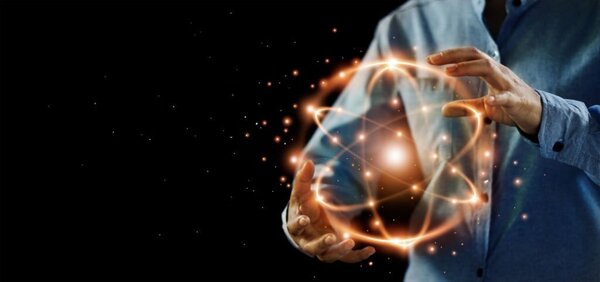
Quantum mechanics is a branch of physics that studies the behavior of particles at a microscopic level. It is based on the idea that particles can exist in multiple states or positions simultaneously, which is known as “superposition.” Quantum mechanics also holds that particles can change their state abruptly and unpredictably, which is called a “quantum jump.”
Quantum particles are the smallest part of anything that exists in our universe and behave differently than other particles called “classical particles,” which follow the laws of Newtonian physics.
What does it mean not to follow the laws of physics? The laws that govern classic particles say that if we know the position and velocity of a classical particle at a certain time, we can predict its position and velocity at any future time. Classical mechanics follows a set of well-defined laws, including Newton's laws of motion and the law of conservation of energy.
On the other hand, the laws that govern the behavior of quantum particles are described by quantum mechanics. Quantum mechanics is based entirely on probability because it is impossible to know the exact position and momentum of a quantum particle at the same time.
Quantum particles also have rules that don’t apply to classic particles. Quantum particles can exist in multiple states simultaneously they can also become connected so that their states are correlated, even when separated by large distances.
When we talk about quantum jumping in a metaphysical sense, we envision a desired outcome and make a leap into an alternate reality to achieve it. This idea is based on the “multiverse theory,” which suggests that there are parallel universes that exist alongside our own.
The multiverse theory is a concept in physics and philosophy that proposes the existence of an infinite number of parallel universes, each with its own unique reality. This theory suggests that every possible outcome of any given event actually occurs in separate universes, creating a vast and diverse multiverse.
The idea of the multiverse first emerged in the field of quantum mechanics, where it was proposed as a solution to the problem of wave-particle duality. It was later expanded on by cosmologists studying the origins and evolution of the universe.
According to the multiverse theory, every time a decision is made, the universe splits into multiple parallel realities, each representing a different outcome.
For example, if a person flips a coin, one universe would have the coin land heads up, while another universe would have the coin land tails up. This would continue to happen with every decision made in every moment, creating an infinite number of parallel universes.
The multiverse theory explains many mysteries of the universe, such as the existence of dark matter and dark energy. It also reminds us that there are infinite possibilities and opportunities available to us in different parallel realities.
In these alternate realities, every possible outcome of every decision that has ever been made exists somewhere in some universe and by focusing our thoughts and emotions on a specific outcome, we can align ourselves with a reality where that outcome has already been achieved.
The universe is responsive to our consciousness and can guide us toward the reality that matches our intentions. This is also known as the “law of attraction.”
This law suggests that a person's thoughts and emotions can have a powerful influence on their reality. According to this law, the energy an individual puts out into the universe, whether positive or negative, will return similar energy to them.
In other words, if someone focuses on positive thoughts and emotions, they will attract positive experiences and outcomes in their life, while negative thoughts and emotions will attract negative experiences and outcomes.
The Law of Attraction is based on the idea that everything in the universe is made up of energy, and that this energy is constantly vibrating at different frequencies. Therefore, by focusing on positive thoughts and emotions, anyone can raise their own vibrational frequency and attract similar positive energy back.
Conversely, negative thoughts and emotions can lower a person's vibrational frequency, attracting negative energy and experiences.
Additionally, we know that the observer effect suggests that the act of observing a quantum particle can influence its behavior.
So quantum jumps occur when intentional energy is poured into manifesting ourselves into a universe where the desired outcome becomes a reality.
There are many examples of quantum jumps in daily life. Anytime something changes suddenly, could be considered evidence of a quantum jump.
For instance, your child may feel better after a hug and a kiss, even though kisses can’t actually heal wounds. Or the placebo effect, which has been scientifically proven to help certain conditions improve. These examples are often attributed to the power of the mind-body connection, where our thoughts and emotions can influence our physical health.
Quantum jumps can lead to dramatic life changes. From starting a new hobby to walking home instead of driving, one little change can create a ripple effect that changes your entire life.
Of course, the power of small decisions is not limited to personal things. It can also have a profound impact on our collective future.
Quantum jumping creates change by asking us to envision a desired outcome and make a leap into an alternate reality. By using the powerful energy within ourselves, we can align ourselves with a reality where the outcome we desire has already been achieved.
Quantum Jumping Steps
Attain a relaxed, detached, and peaceful altered state.
Feel energized about your visualized positive outcome.
Take positive action in keeping with your new reality.